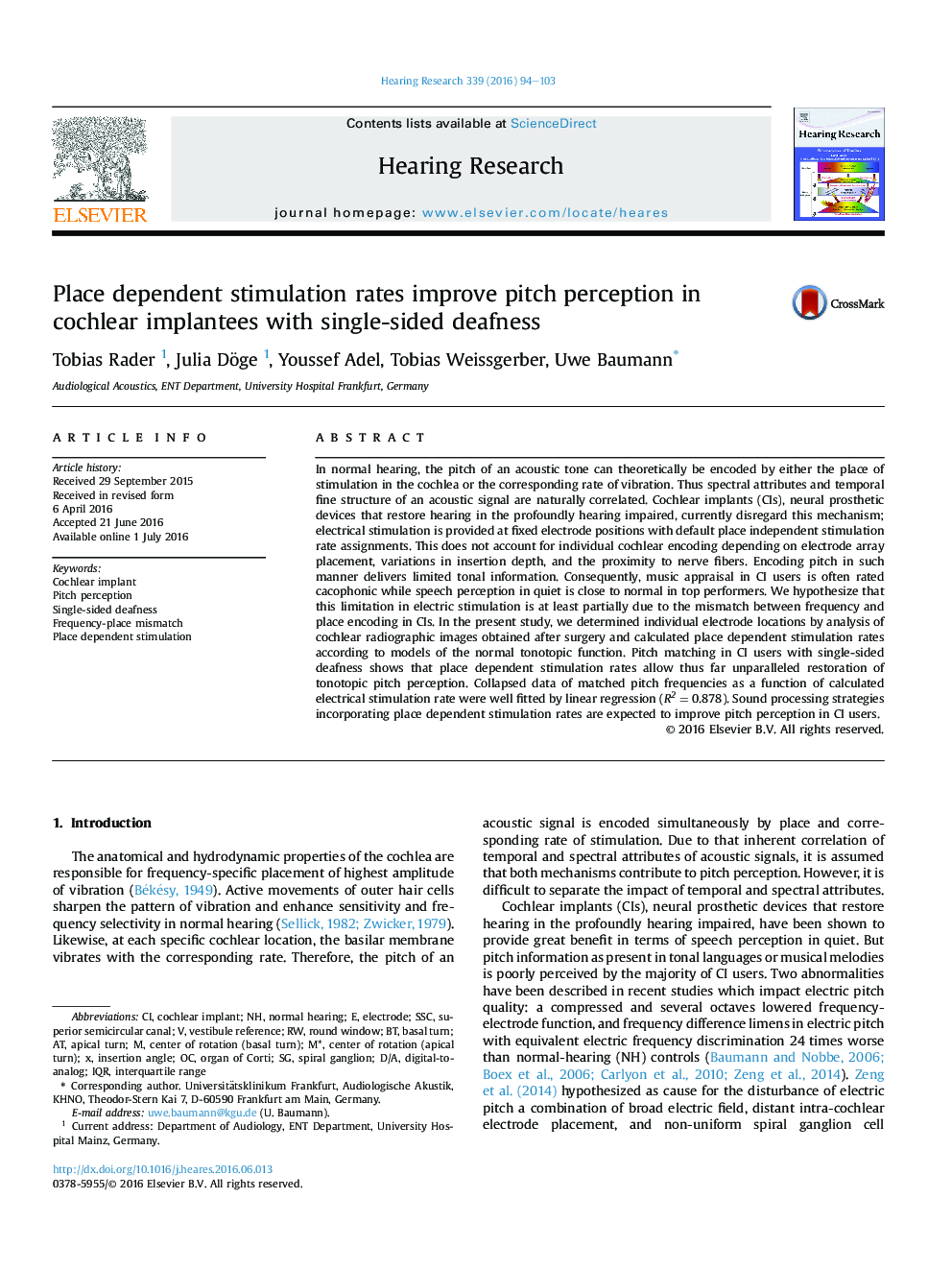| Article ID | Journal | Published Year | Pages | File Type |
|---|---|---|---|---|
| 6286941 | Hearing Research | 2016 | 10 Pages |
Abstract
In normal hearing, the pitch of an acoustic tone can theoretically be encoded by either the place of stimulation in the cochlea or the corresponding rate of vibration. Thus spectral attributes and temporal fine structure of an acoustic signal are naturally correlated. Cochlear implants (CIs), neural prosthetic devices that restore hearing in the profoundly hearing impaired, currently disregard this mechanism; electrical stimulation is provided at fixed electrode positions with default place independent stimulation rate assignments. This does not account for individual cochlear encoding depending on electrode array placement, variations in insertion depth, and the proximity to nerve fibers. Encoding pitch in such manner delivers limited tonal information. Consequently, music appraisal in CI users is often rated cacophonic while speech perception in quiet is close to normal in top performers. We hypothesize that this limitation in electric stimulation is at least partially due to the mismatch between frequency and place encoding in CIs. In the present study, we determined individual electrode locations by analysis of cochlear radiographic images obtained after surgery and calculated place dependent stimulation rates according to models of the normal tonotopic function. Pitch matching in CI users with single-sided deafness shows that place dependent stimulation rates allow thus far unparalleled restoration of tonotopic pitch perception. Collapsed data of matched pitch frequencies as a function of calculated electrical stimulation rate were well fitted by linear regression (R2Â =Â 0.878). Sound processing strategies incorporating place dependent stimulation rates are expected to improve pitch perception in CI users.
Keywords
Related Topics
Life Sciences
Neuroscience
Sensory Systems
Authors
Tobias Rader, Julia Döge, Youssef Adel, Tobias Weissgerber, Uwe Baumann,
